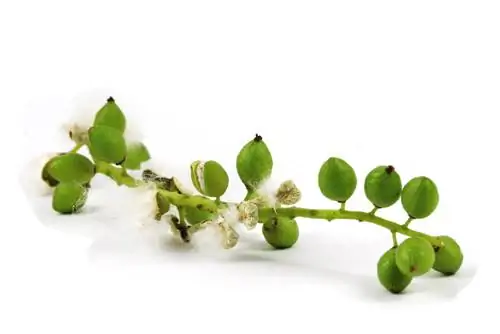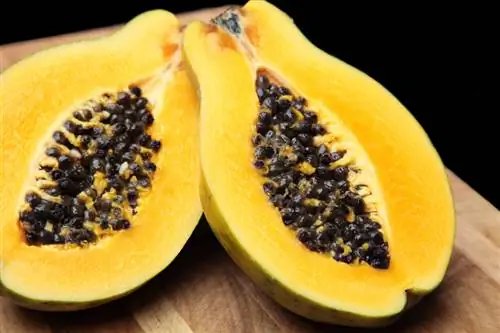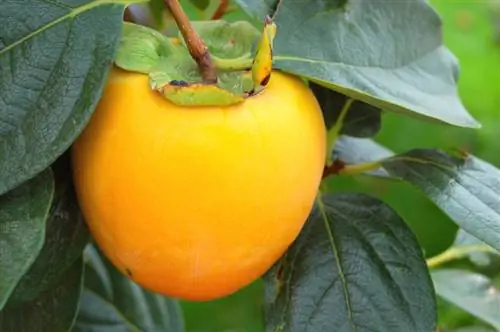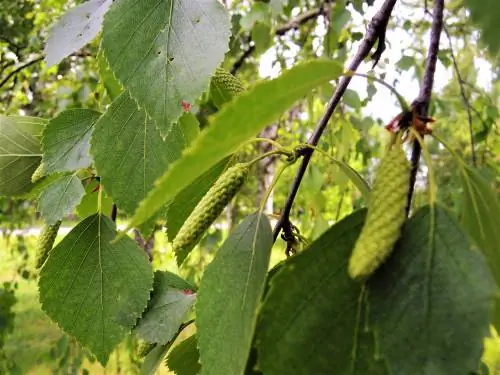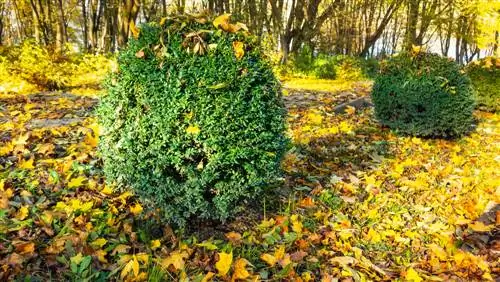- Author admin [email protected].
- Public 2024-01-05 20:48.
- Last modified 2025-01-23 11:21.
The fruit heads form on the poplar catkins in late spring. Anyone who has ever walked through an early summer poplar forest knows what happens a little later: it rains downy seeds.
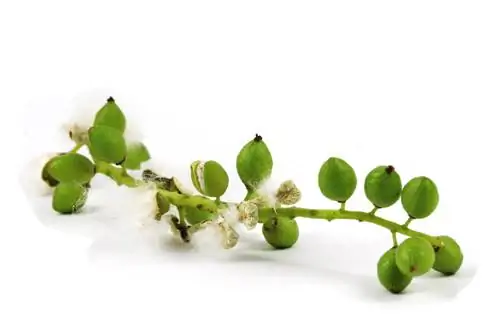
What does the fruit of a poplar tree look like and how is it distributed?
The fruit of the poplar arises in female catkin flowers in the form of capsule fruit heads that ripen and end in May. The seeds are equipped with a tuft of white downy hairs that help them to be dispersed by the wind and germinated.
The flower and fruit chronology of the poplar tree
The order of what poplars form over the course of the annual cycle is as follows:
1. Blossoms
2. Leaves3. Fruits
Flowers
In all species of the genus Populus, the flowers are the first thing they produce every year. These are typical catkin inflorescences that hang down as worm-shaped spikes with a soft, downy exterior. The species that are more common in Central Europe, such as the quaking aspen, the black poplar or the balsam poplar, begin to bloom in March or April. Depending on the location, the flowering times can be several weeks apart even within poplar groups.
Leaves
The foliage only develops after flowering, so that the poplars are initially only covered with catkins. Over the course of April, the poplar gradually turns green.
Fruit formation with wind support
Poplars have made the wind their friend and helper during the complete generative propagation process, which is generally very popular among plants. Poplars are both wind-flowered (anemophilous) and wind-flying (anemochorous). This means that they use air movement to carry out both pollination and seed dispersal.
For the fertilization process, the male catkin flowers of a poplar individual release their pollen dust to the wind. Its role is to carry the dust to female catkin flowers of another poplar tree. After pollination, the egg cells of the female flower are fertilized within 24 hours and a seed can be formed.
Numerous capsule fruit clusters with 2 to 4 lobes then form all around a female catkin flower. The seeds mature there and take on the important task of preserving the species. At the end of May the time has come: the capsules are spread open to release the seeds. In this phase, the kittens have a felty appearance due to the opened flaps.
Now the wind comes into play as a supporter for the second time: it not only transports the pollen dust of the male kittens, but also the seeds of the female ones. He throws the seeds out of the opened capsule fruits in order to distribute them in the area and give them a chance to germinate.
Seeds with paraglider
In order to ensure species reproduction as far-reaching as possible, the seeds are equipped with an effective flight aid: This is a tuft of white downy hair on the top. This ensures that the seeds fly as far as possible and increase their distribution radius. It also makes the seeds more buoyant, so that they can be transported much further via rivers and streams and fulfill their reproductive task for miles.
Poplar trees produce a lot of these downy seeds. This creates a real fuzz under the poplar trees in June, which looks like a summer swirl of snowflakes. If you have poplar trees nearby, you may often come home in early summer with one or two pieces of white fluff in your hair.

